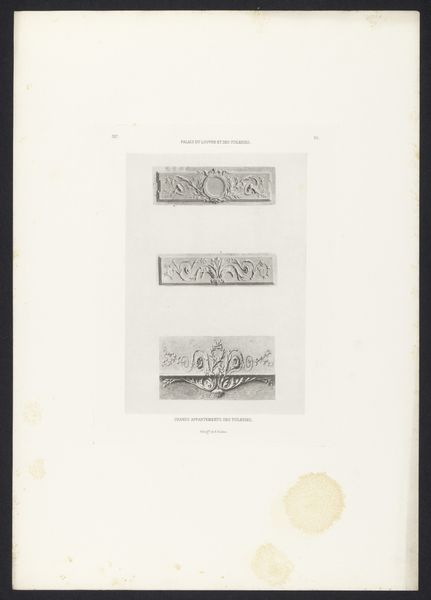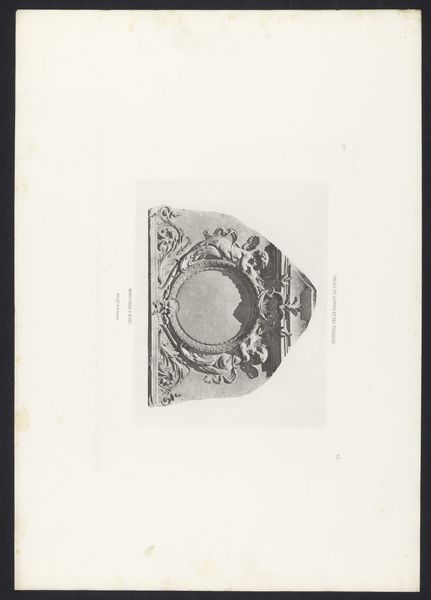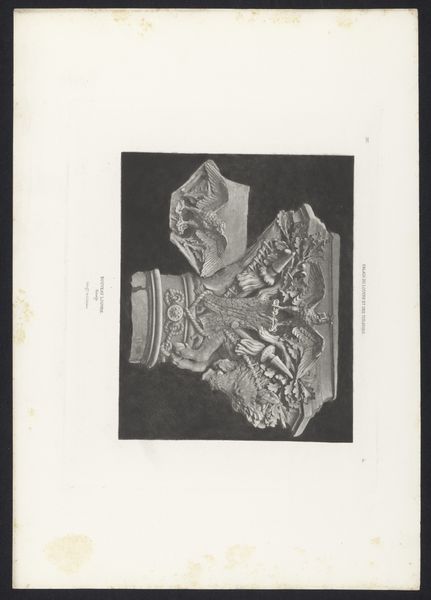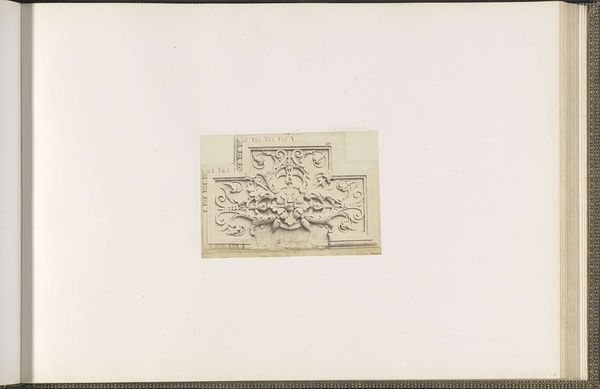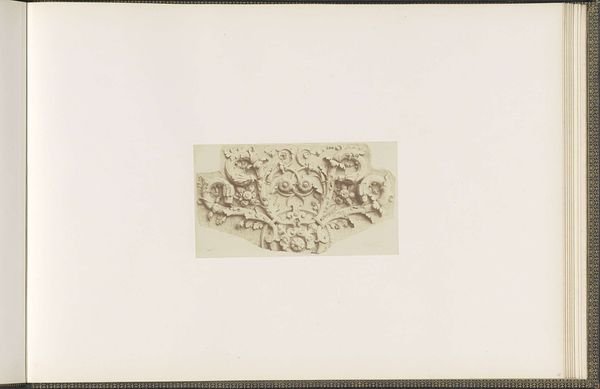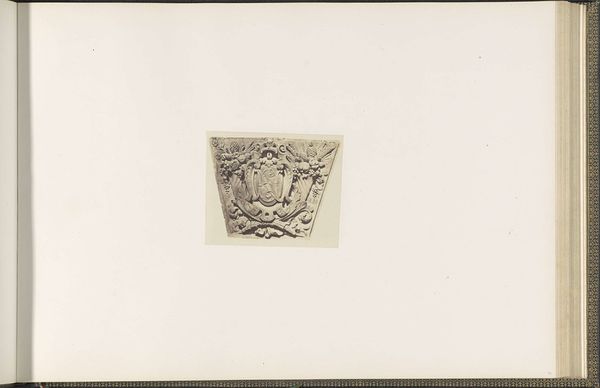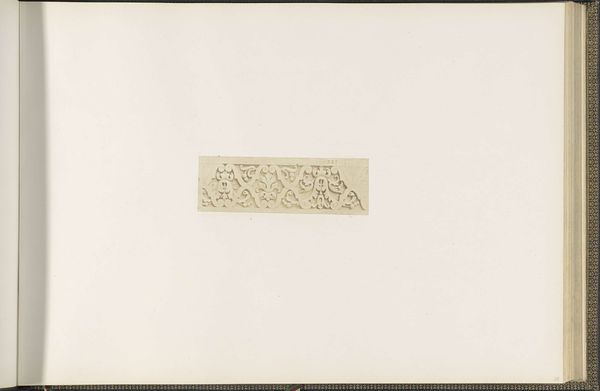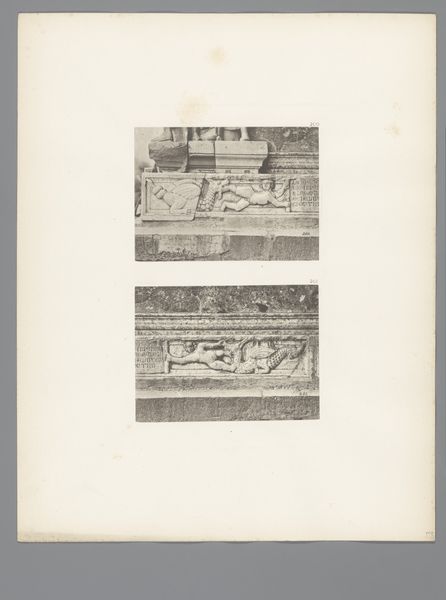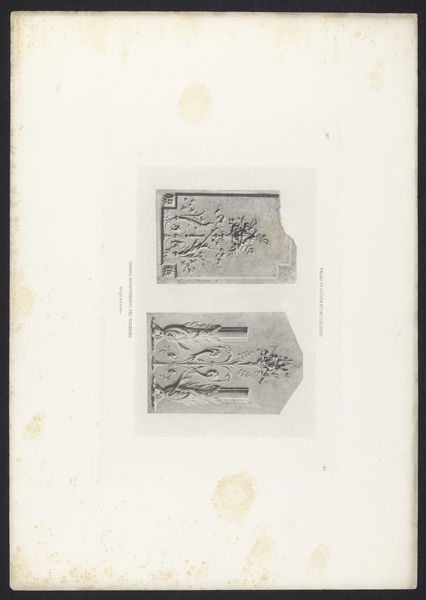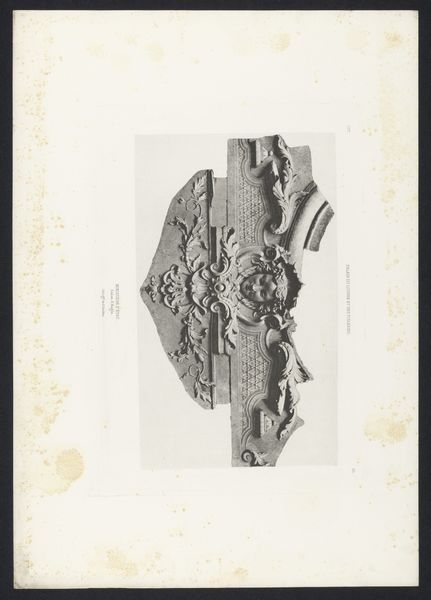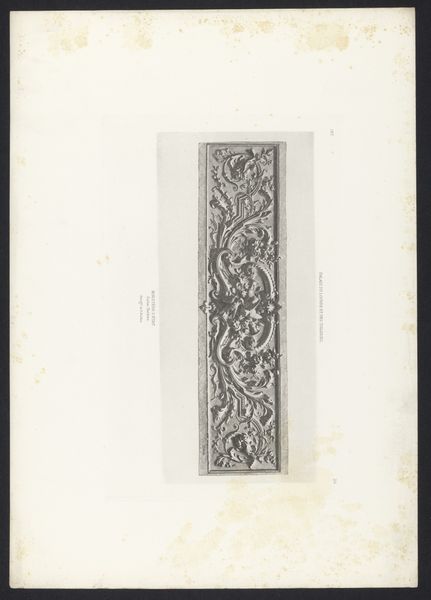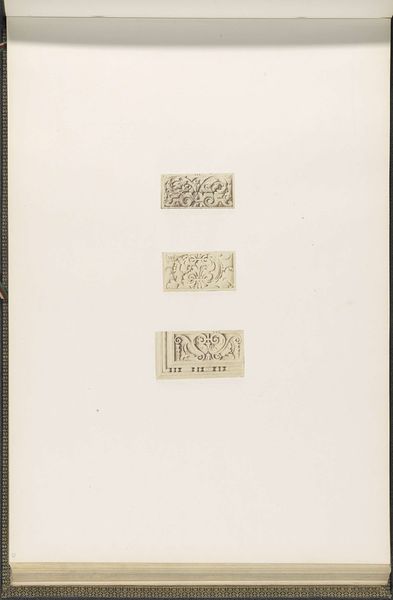
Dimensions: height 115 mm, width 239 mm
Copyright: Rijks Museum: Open Domain
Editor: This engraving, created by Edouard Baldus before 1870, is titled "Reliefs from the Tuileries Palace in Paris." It's a delicate study in monochrome. The composition, with its repeated architectural motifs, is surprisingly calming. How would you interpret its design? Curator: Focusing purely on form, one notes the precise, almost mathematical, rendering of classical elements. The linear quality achieved through engraving accentuates the structure and inherent geometry of the architectural details. The consistent texture throughout speaks to the emphasis on the medium's potential for accuracy and controlled detail. Do you see how the rhythm established by these repeated patterns offers visual pleasure? Editor: Yes, the repetition is key. But isn't the choice of subject – architectural fragments – also significant? Is there any indication of a deeper narrative in these decaying vestiges? Curator: We must be cautious of imposing external narratives. Focus on what is explicitly present: the interplay of light and shadow defining the relief, the balance between the rigid geometric forms and the organic flourishes. Consider the conscious organization of the visual elements within the frame; this is not a document but an exercise in form. Do you find this emphasis shifts our experience from recording history to something… else? Editor: It does reframe it, doesn't it? It's less about the history and more about the design itself. I suppose, focusing on the inherent components allows us to admire its structure. Thank you! Curator: Indeed, understanding art through formal analysis allows us to see the artistry within what appears to be a relic of another era.
Comments
No comments
Be the first to comment and join the conversation on the ultimate creative platform.
